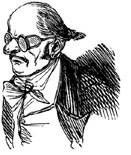
The Unwelcome Ex-“Gay” Phenomenon
CHALLENGING THE "UNCHANGEABLE"
People used to speak of The New York Times as “the good, gray Times.” On Sunday, December 10, 2000, this reputation took another sharp, self-inflicted blow to the midsection when the Times Magazine printed an article and spread its title all over the cover, yellow on black, in letters two and three inches high: “Gay, 15 and Out.”
Inside was a subtitle: “How Jeffry found friendship, sex, heartache — and himself — online.” The author was Jennifer Egan, described as a novelist and regular contributor. Early on in the article, we read this:
The popularity of “cybering,” as online sex is called — masturbating in real time to sexually explicit typed messages — has lately been supplanted (among boys, especially) with a mania for Web cams and microphones, which allow them to see and hear each other masturbate…. Gay pornography, too, can be a valuable resource; a number of youths I spoke with, male and female, said that the availability of online porn had proved critical to their discovery of their sexual orientation.
“Valuable resource.” We’re talking values here. And one of those values, according to Egan and The Times, is the value of “gay” pornography on the Internet to persuade undecided teenagers that they are better off as active homosexuals than heterosexuals.
You May Also Enjoy
I am convinced that many, if not most, people who are familiar with the lives of homosexuals know the truth but refuse to face it.
To accept our brokenness is not to resign ourselves to it or succumb to it. Our individual crosses must be carried along the path God has chosen for us, to Heaven.
The Vatican evidently wants neither to ban nor not ban homosexuals from the priesthood, since it again chose to do neither in a recently-issued document on clerical formation.

